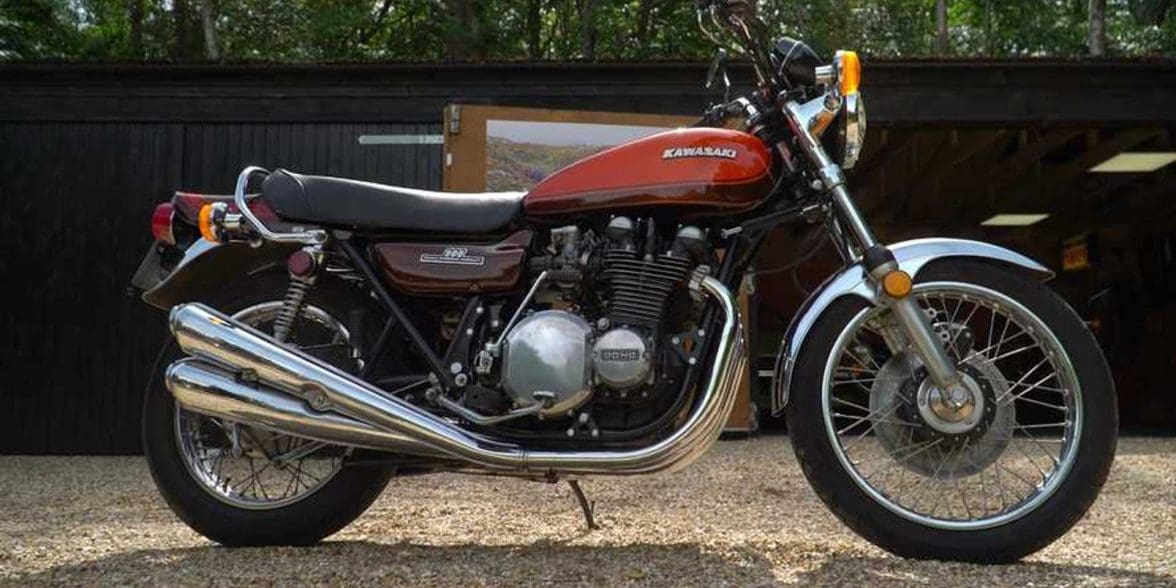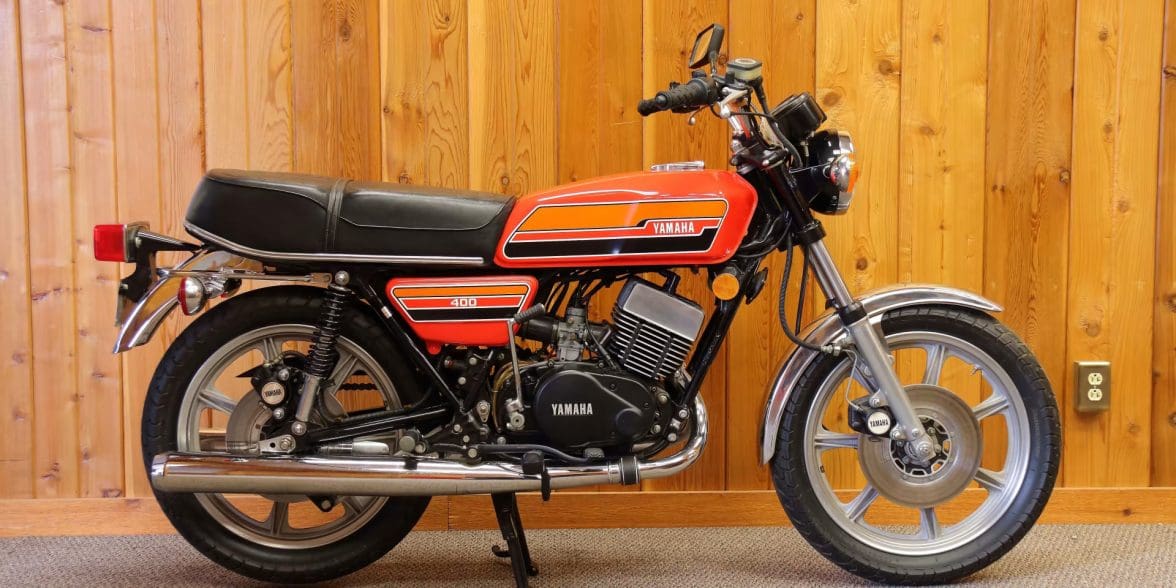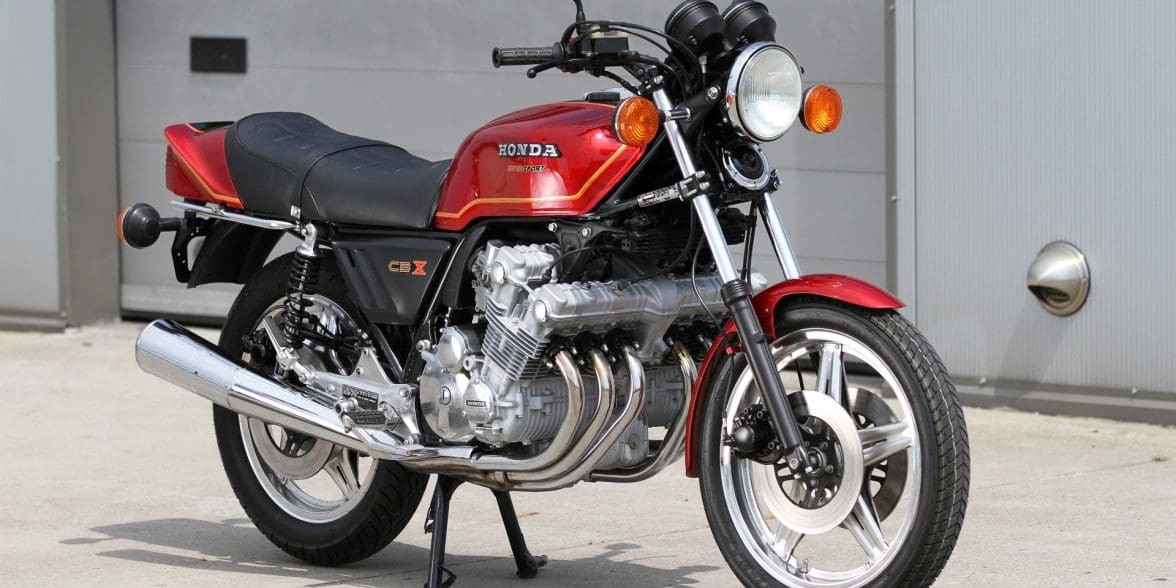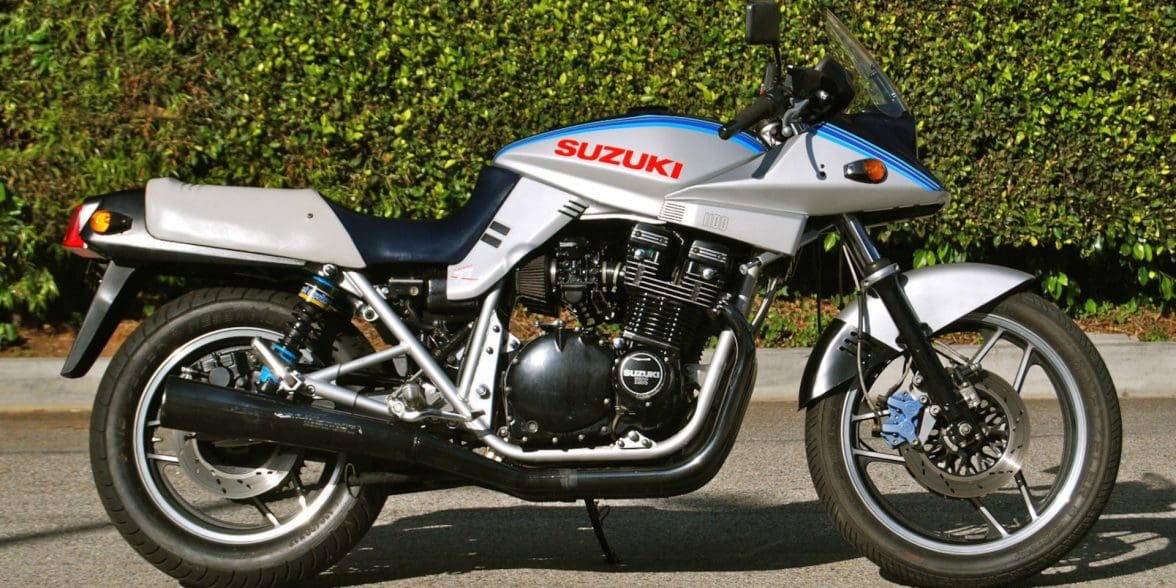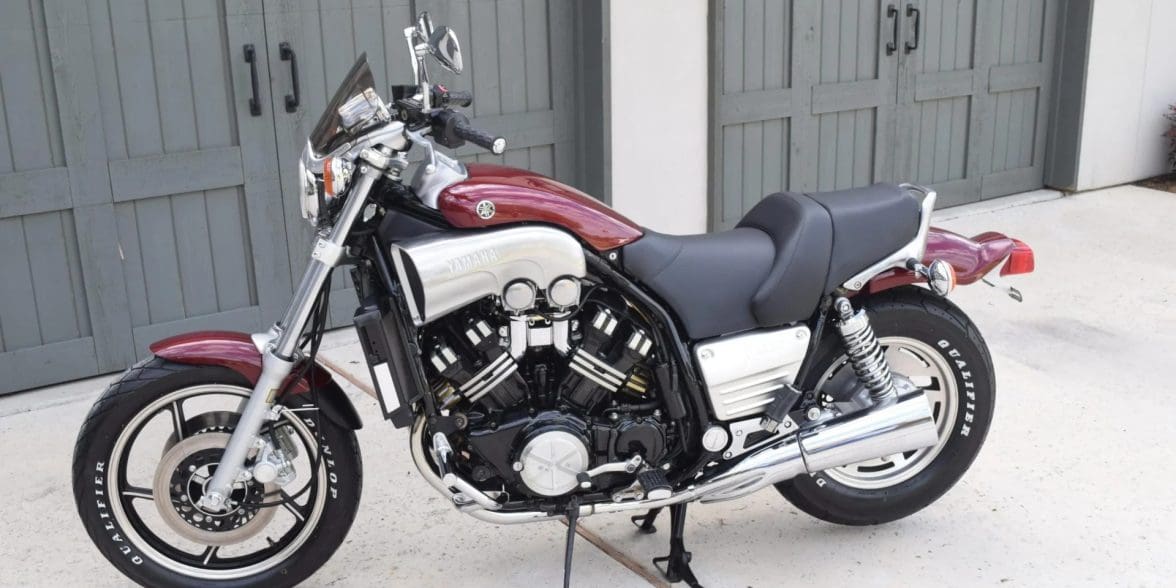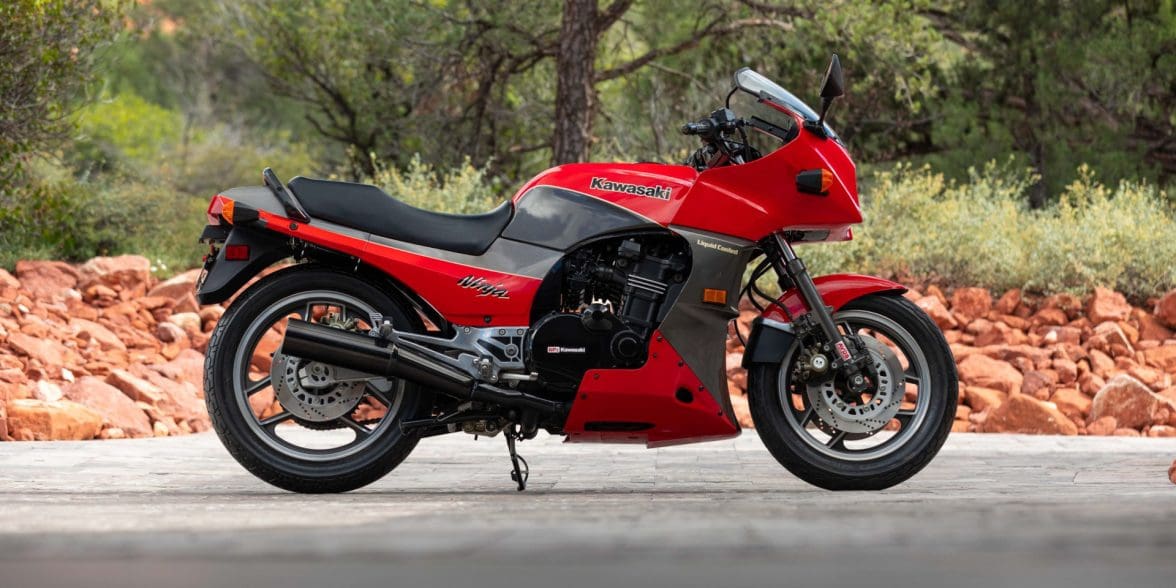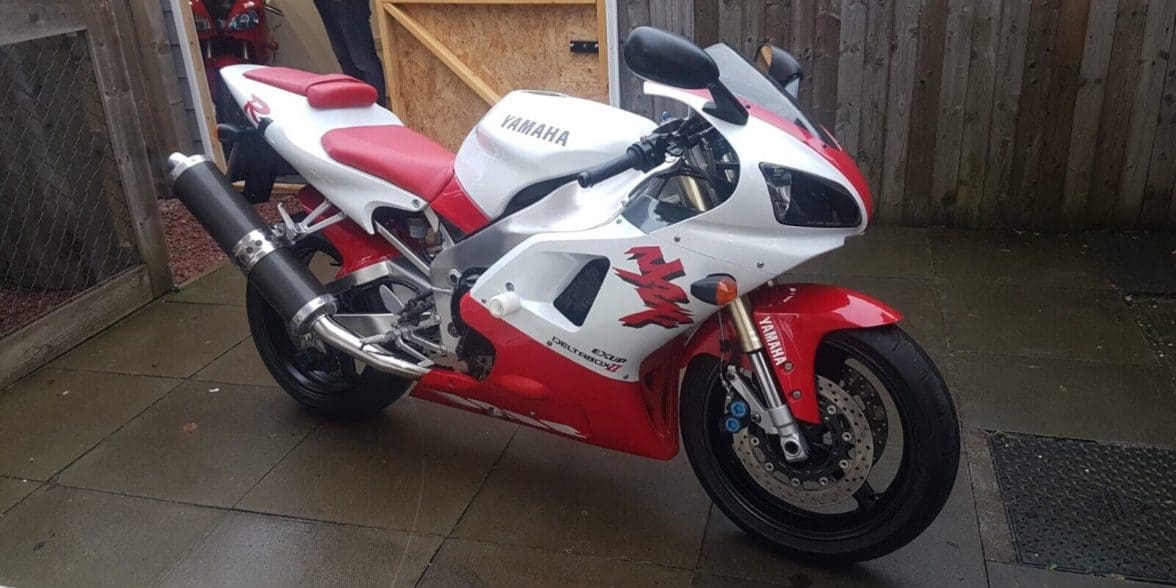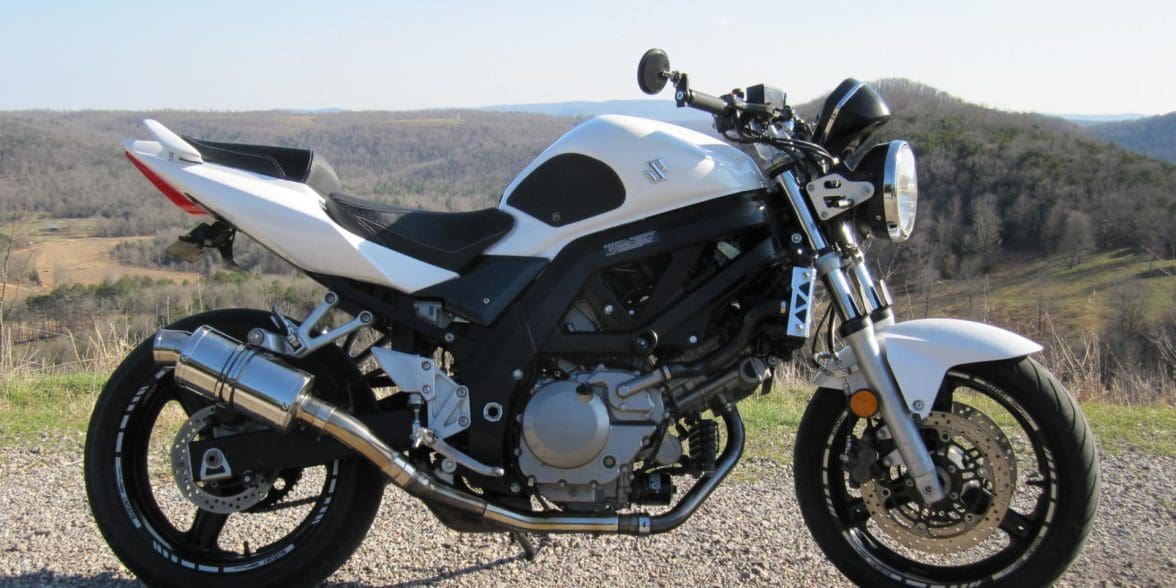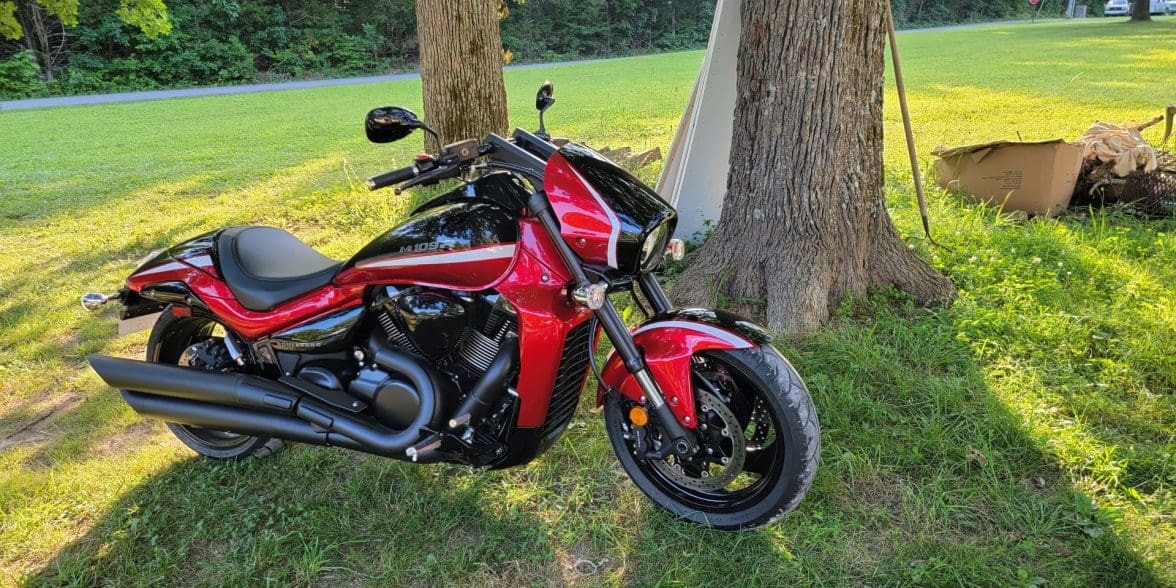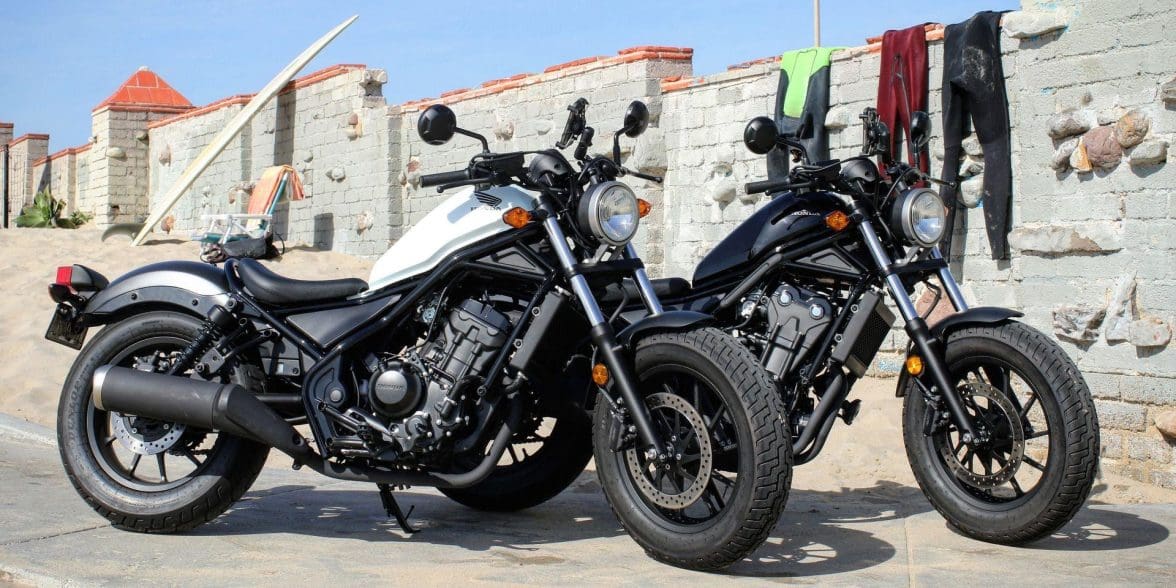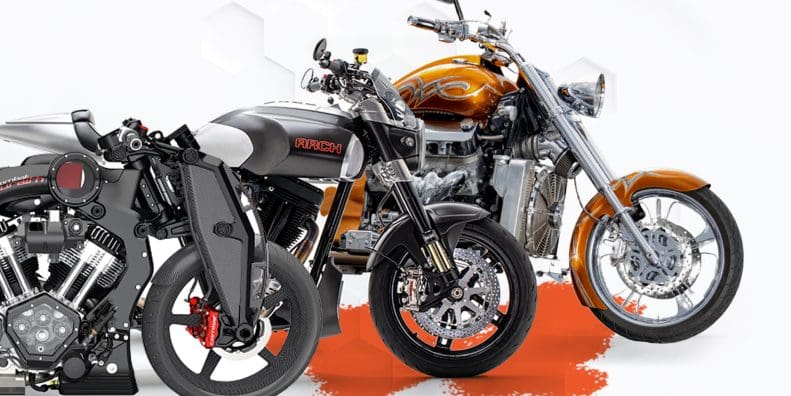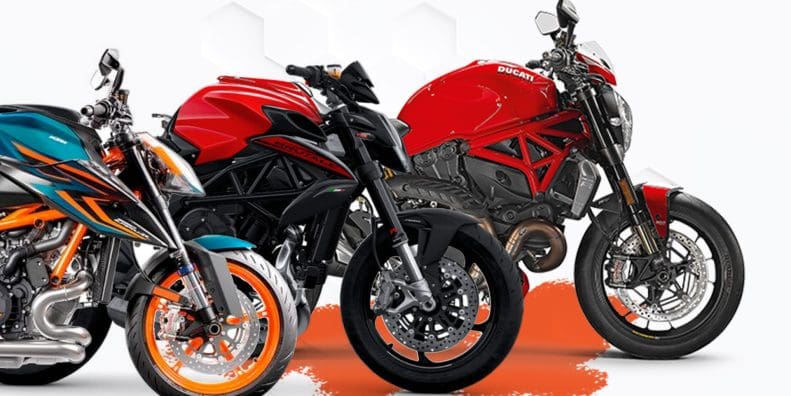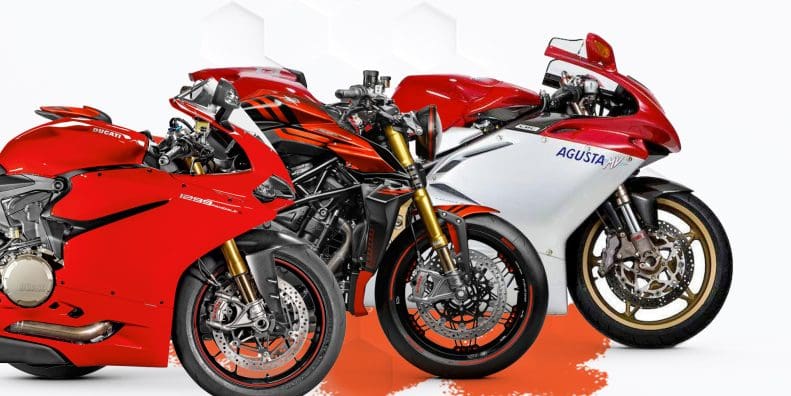The Best Japanese-Made Motorcycles Of All Time [2024 Edition]
Updated September 29, 2023 by Simon Bertram
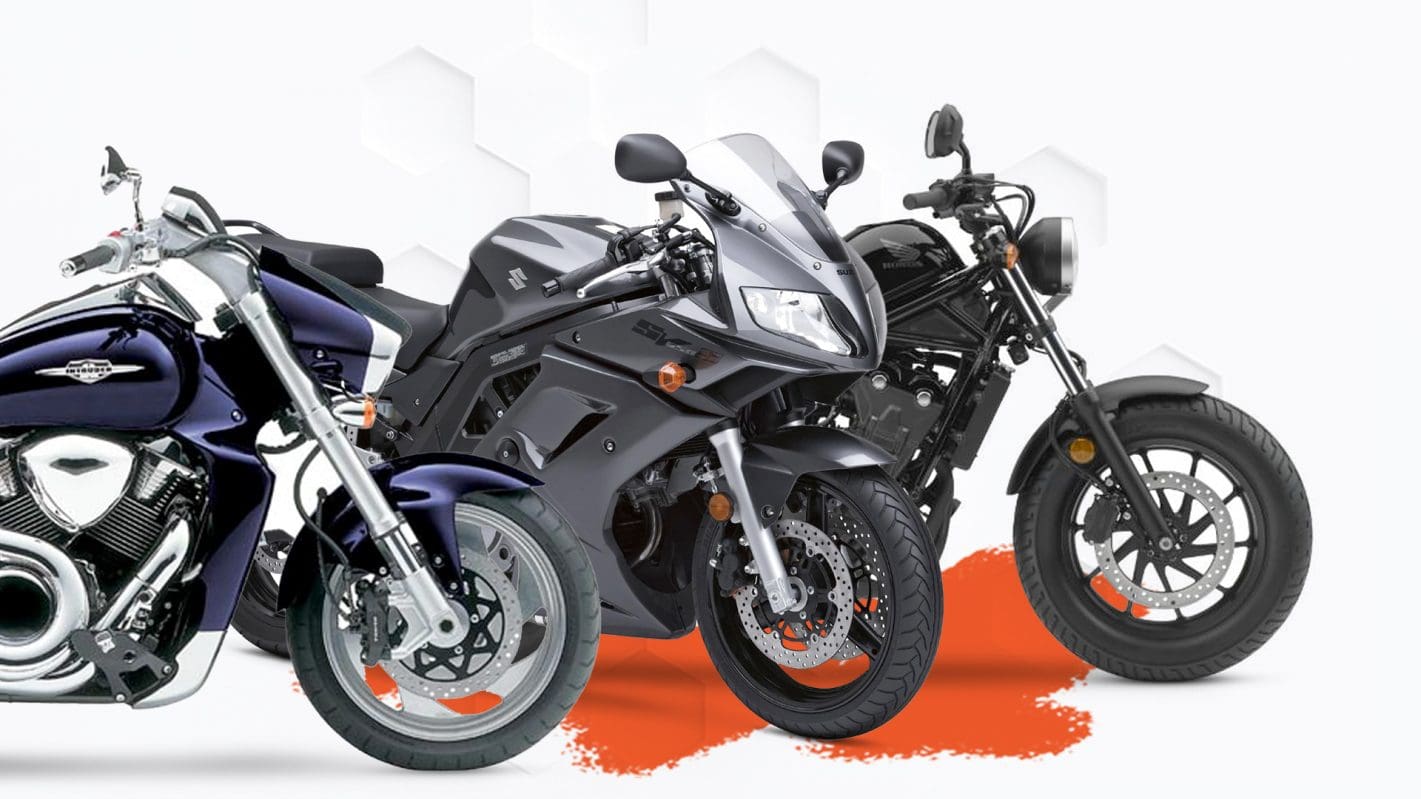
Some Of The Best From The Land Of The Rising Sun
Article Quick Nav
These are just a few of the best bikes to come from Japan:
We'll get the elephant in the room taken care of right away: You are likely not going to agree with our list, and that's perfectly fine. Everyone has an opinion, and we'll explain to you why we picked the motorcycles we did.
Firstly, we had to define what the term "Best ever" actually meant. Was it the fastest? The most technically complex? The most influential? The most beginner friendly but veteran capable as well? To be honest, we tossed around about 20 different variations of what "Best ever" meant before our content director simply mentioned: "Why not all of those ideas as one?"
As such, these motorcycles are some of the most influential, fastest, craziest, most refined, best handling, most beginner friendly, most veteran appreciated, and about 20 other terminologies to come out of the Land of the Rising Sun. We tried to find the bikes that crossed multiple definitions as well, but some of the bikes we chose are simply the best of their class to come from Japan, and they just had to be included!
Also, we do realize that some "obvious choices" are missing here, such as the Honda Super Cub, the Kawasaki ZX-10R, the Suzuki GSX-R750, and the like. The reason they are omitted is that they have populated many other "Best Of" lists on wBW, and we thought that it was time to give the influential and important bikes that sometimes get buried a little time in the limelight.
About Our Selections
These selections were based, as described above, on firstly being a motorcycle from Japan, and secondly on it being the "Best of" one of many categories. No other criteria were used.
1972 Kawasaki Z1
The ultimate UJM sport bike, and one of the first purpose-built for American customers
Why We Picked It:
The story of how the Kawasaki Z1 came to be is one of refusal to defer and sheer engineering might put to excellent use. By the late 1960s, all of the Big Four out of Japan had several models in the USA, from 125cc to the "big" 500cc bikes. However, Harley-Davidson and Indian both had bikes with bigger engines and bigger power, and were using that in their marketing. This irked the Japanese, who had deferred to them as the American manufacturers producing big bikes for the American consumer, and they decided enough was enough.
One of the bikes that came from those ruffled feathers was the Z1. It eschewed the typical Japanese style of a conservative approach, and instead was designed simply to be a stupidly fast and agile motorcycle, and took inspiration from that most American of icons: The muscle car.
The Z1 carried a monster 903cc inline four engine that roared out 83 HP and a butt-ton of torque, and it absolutely blitzed anything on offer from either of the two big American Iron manufacturers. It was the quinessential UJM, and perhaps the best one made, in that it was easy to ride, handled beautifully, went stonkingly fast, and was easy to maintain. It cemented its place in history a decade after its introduction, when a race modified version (KZ1000R) helped both Wayne Rainey and Eddie Lawson both become AMA Superbike champions.
Not a bad run: Decimate the American competition, then at the end of its lifecycle, help establish two legendary racing names.
Specifications:
Price: $1,895 in 1972 ($13,950 in 2023)
Engine: 903cc inline four
Power: 83 HP
Torque: 54.2 lbs-ft
Transmission: 5 Speed Manual
Curb Weight: 542 lbs
Strengths:
The ultimate UJM: Ridiculously fast, agile, easy to ride, easy to maintain, and reliable.
Shocked the world, and especially the USA, with its firm sledgehammer blow against the American manufacturers of the time. It surpassed pretty much anything on offer from Indian and Harley, and didn't even stop to wave at them as it roared by
Its racing version, the KZ1000R, is renowned for helping launch the racing carrers of both Eddie Lawson and Wayne Rainey, two of the greatest American champion riders of all time.
Learn More:
1975 Yamaha RD400
The bike from Yamaha that finally made riders sit up and pay attention, especially in the USA
Why We Picked It:
Yamaha's initial efforts in the export market (read: the USA) were decent, but they weren't as Earth-shaking as the bikes coming from Honda and Kawasaki. They realized this, and realized that they needed to find a niche to take over and dominate. They found it in the middle-displacement sport bike scene.
The Yamaha RD400 was by no means a big bike. It was, in fact, tiny, about as large as a modern day YZF-R3. It came with 399cc parallel twin that put out 44 HP and 30.3 lbs-ft of torque. But, crucially, it was extremely light, at 360 lbs soaking wet with a brick tied to the seat. This made it hilariously agile and flickable, and gave rise to a type of rider that we now refer to as "Hoons," but back in the 1970s they had the much less glamorous title of "Punks."
It could zip around almost any other bike on the road while wailing out its song. It was small and narrow enough to dart between cars in a traffic jam, or even while moving at freeway speeds. It could be ridden extremely hard, and because Yamaha had engineered the hell out of it, it would take the punishment and ask for more. Basically, it was the first true hooning machine, and we now have an entire market segment, the Sport Naked motorcycles, because of this little rascal.
Specifications:
Price: Unknown
Engine: 399cc parallel twin
Power: 44 HP
Torque: 30.3 lbs-ft
Transmission: 6 Speed Manual
Curb Weight: 360 lbs
Strengths:
The best bike out of Japan for those interested in being less-than-sane while riding, aka being punks
Can safely be considered the very first hooning machine, a bike that is agile, fast, and can dart around and between other traffic
Did have some mild racing use, including as a flat-track racers and, heavily modified, as a junior series AMA sport bike
Learn More:
Yamaha RD400 WikiPedia page
1978 Honda CBX
The world's first true superbike. Also, an inline six engine that has perhaps the single best exhaust note for any bike, ever.
Why We Picked It:
In the entire history of sport bikes, the 1978 to 1982 Honda CBX, sometimes called the CBX1000, stands alone as the single bike, the origin, of the term superbike. The funny thing is that it was almost made by accident. The Honda engineers and designers were allowed to pose the question "What if...?" in designing Honda's next sport bike in 1975, and they brought together an inline six engine from racing in the past decade, with a newly reinforced frame and made the bike long, but comfortable, so the rider could take advantage of the power the engine produced.
The result was a bike that revved like an absolute monster and sounded like a mid-2000s Formula 1 V10 car. It absolutely howled out 105 HP, and could easily reach 140 MPH. As well, by extending the handlebars forward to make room for the engine, but not lowering them, Honda inadvertently created the sport-standard riding position, which many bikes, including their own CBR650R, still use today.
It was a massive hit, but also only lasted for five short years. Several variations were made, from the sport model that we would call a sport naked today, to the fully faired and very capable Sport Touring model. At the time of its release, it also briefly held the record of the fastest production motorcycle ever made. Not bad for only half a decade on the market!
Specifications:
Price: Unknown
Engine: 1,047cc four-strike inline six
Power: 105 HP
Torque: 63 lbs-ft
Transmission: 5 Speed Manual
Curb Weight: 600 lbs
Strengths:
Quite possibly the best sounding motorcycle ever made.
Helped start the supersport and superbike craze that swept around the globe in the 1980s
Was one of the first sportbikes that implemented a version of the sport-standard position that is now the hallmark of sport touring motorcycles such as the current Honda CBR650R
Learn More:
1981 Suzuki GS1100S Katana
A true legend in the sport bike community, and lay the groundwork for Suzuki's supersport series: The GSX-R's
Why We Picked It:
By the 1980s, Suzuki was starting to be considered a bit behind the times. Their styling hadn't really evolved beyond the early 1970s UJM look, and it was beginning to affect their bottom line. In one of the greatest hail mary decisions in motorcycle design history, they turned to Hans Muth and his team at Target Design, the design house behind BMW's all new look and feel for the 1980s, and hired them point blank.
Their goal was to create a hyper-European look that would inspire the design language of the Suzuki bikes of the 1980s. Working on the basis of the GS1000 superbike, Muth and his team created the now legendary cyberpunk-future look of the Katana, and underpinned it with the best bits from Suzuki's parts bins.
It had a frame with superb rigidity and sound geometry, compliant but sporty suspension, and the piece de resistance, the 1,074cc, 16 valve, dual overhead cam inline four engine. It produced 111 HP, 70.8 lbs-ft of torque, and featured independent throttle bodies and carburetors, in the shape of four Mikuni BS34SS downdraft units.
It was such an engineering feat combined with stellar design that not only did it inspire the look of Suzuki's bikes for a good decade, it also laid the groundwork for the first bike to carry the GSX-R tag, the 1985 GSX-R750. Basically, if you ride a Gixxer, you can thank the Katana for helping create that entire model line.
Specifications:
Price: $4,499 in 1981 ($15,235 in 2023)
Engine: 1,074cc inline four
Power: 111 HP
Torque: 70.8 lbs-ft
Transmission: 5 Speed Manual
Curb Weight: 535 lbs
Strengths:
Revamped Suzuki's entire image into a cyberpunk-futuristic style language that permeated the lineup until the aerodynamic revolution of the 1990s
Had one of the best engines of the 1980s, period.
Was so good in its original form that it was still relevant and competitive with other sport bikes all the way up to 2006. This includes bikes like the YZF-R1, the GSX-R1000, and the ZX-6R 636
Learn More:
Suzuki GS1100S Katana WikiPedia page
1985 Yamaha VMAX
The purest definition of a power cruiser from Japan, in both its first and second generation styles
Why We Picked It:
The mid-1980s was a time when big engines and big power were starting to become a thing again, after the oil crisis of the later 1970s. Harley-Davidson had started to make chunky big v-twins again, and most of the other Japanese manufacturers were making big engines for sport bikes. Yamaha, however, took a different approach.
Launching in 1985, the Yamaha V-Max, which was later changed to VMAX, was a surprise in the form of a power cruiser, and not just an ordinary one at that. Instead of relying on big, chunky V-twin to put down the power, a 70-degree banking angle, 1,197cc V4 was instead slung low and forward in the V-Max's frame. The goal really did exist in the name of the bike: Yamaha wanted to have the fastest cruiser on any road, but especially American roads. Period.
Well, when the 1985 launch version of the bike was capable of a nigh-unheard of 150 MPH from a cruiser, it was a whole new idea and identity of what a power cruiser was. It also accelerated like nothing else out there, reaching 60 MPH in under 3 seconds. It was so advanced that its first generation lasted until 2007.
From 2008 to 2020, however, was when Yamaha went completely off the deep end with the second generation. 1,679cc V4. Near as makes no difference 200 HP. 113 lbs-ft at the rear wheel. The result? The Yamaha VMAX still holds the record as the fastest accelerating motorcycle, not just cruiser, but motorcycle, at just a hair over 2.4 seconds 0 to 60.
Specifications (First Generation 1985-2007):
Price: $5,299 in 1985 ($15,155 in 2023)
Engine: 1,197cc V4
Power: 135 HP
Torque: 96 lbs-ft
Transmission: 5 Speed Manual
Curb Weight: 631 lbs
Strengths:
To this day, still one of the fastest power cruisers in its first generation, and the fastest power cruiser in its second generation
Surprised everyone in the supersport-crazy decade that was the 1980s by bringing out a power cruiser that gave a solid kick to the face of Harley-Davidson
Was so good that only minor upgrades were made during the first generation, with the most significant being a wider and stiffer damped front fork to increase handling dynamics
Learn More:
1985 Kawasaki Ninja GPZ900R
The first production supersport to go over 150 MPH, and also the first to carry the Ninja moniker
Why We Picked It:
The 1985 Kawasaki Ninja GPZ900R is one of those motorcycles that is, to borrow the term from the modern Doctor Who TV show, "a fixed point in time." There is the world before the GPZ900R, and the world after it. It was a bike of many firsts, and revolutionized sport bikes as we know them with its release.
It was the first Kawasaki sport bike with 16 valves. It was the first supersport motorcycle, ever, to break beyond 151 MPH. It was a technical masterpiece, a bike that slung a 908cc inline four and produced a stunning 115 HP in the mid-1980s from something that was under 1,000ccs.
It also set the precedent for the future of Kawasaki's sport bikes, as it was the first to ever carry the name Ninja. That little tag before a series of letters and numbers nowadays means you're getting one hell of a sport bike, be it a supersport, superbike, or sport tourer. That pedigree, that innate knowledge of greatness, comes from this humble little bike that just also happened to appear in a tiny little movie called Top Gun.
Specifications (1985 Model Year):
Price: $3,999 in 1984 ($11,845 in 2023)
Engine: 908cc inline four
Power: 115 HP
Torque: 63 lbs-ft
Transmission: 6 Speed Manual
Curb Weight: 508 lbs
Strengths:
The first supersport to go beyond 151 MPH
Extremely popular and sold very well, very likely because of its short but significant appearance in Top Gun
Learn More:
1998 Yamaha YZF-R1
A superbike that arose from the Power Wars of the 1990s, carrying many technical firsts that are now considered standard in superbikes.
Why We Picked It:
It is not a stretch at all to say that the Yamaha YZF-R1 is perhaps the best "mainstream" superbike available. You get more features and rider aids in a ZX-10R, you get a confident and capable rocketship in the CBR1000RR-R, and you get a raw, razor's edge ride on a GSX-R1000R. But none of those bikes combine all of those features into one quite as well as the R1.
The biggest thing that the original 1998 YZF-R1 brought to the table was the ingenous "Stacked engine" design. Instead of placing the transmission input shaft behind the crankshaft, Yamaha lifted the engine a little and put the input shaft under it. This shortened the space that the engine took up as a whole unit in the frame, as well as put the bulk of the engine weight just below the midline, which allowed for the swingarm to made longer, while also shortening the overall bike and optimizing the center of gravity.
The design was so ingenious that by 2001, every supersport and superbike used a stacked gearbox system, and it is still in use to this day. Not one to sit on their laurels, however, Yamaha gave the superbike world another solid punch in the face in 2007 by introducing the first throttle-by-wire system used in a superbike, Yamaha Computer Controlled Throttle, or YCC-T, and gave the engine a massive boost in power to 191 HP from its original 150 HP.
Even today, if you swing a leg over an R1 and get it going on a track, it is absolutely sublime in how it communicates and responds. There are very few bikes that can be as at one with you as the Yamaha, and that alone makes it one of the best Japanese bikes ever made.
Specifications (1998):
Price: $9,999 in 1998 ($18,880 in 2023)
Engine: 998cc inline four
Power: 150 HP
Torque: 72.7 lbs-ft
Transmission: 6 Speed Manual
Curb Weight: 437 lbs
Strengths:
Introduced the concept of the stacked engine. Within 3 years, every supersport and superbike used that design, and it is still in use today.
Was the first superbike to have throttle-by-wire, beating BMW's S1000 RR by just over 18 months to market with the system
Is considered by many to be the ultimate superbike for track use, as it combines the rawness of a GSX-R, the features of a Kawasaki, and the speed of a CBR in one complete package.
Learn More:
Yamaha YZF-R1 WikiPedia page
1999 Suzuki SV650
The greatest beginner bike of all time, as well as one of Suzuki's first true sport naked bikes
Why We Picked It:
Ever since 1999, there has been no bike quite like the Suzuki SV650. It is one of those motorcycles that just got everything right out of the gate, and apart from a 3 year misstep (the Gladius), it has consistently been one of the best motorcycles not just for beginners, but one of the best motorcycles of all time.
It is perhaps the most forgiving sport naked bike you can think of, with a power curve so linear that you could use it to cut perfectly even slices of whatever you're cutting. Open the wrist a little, get a little power. Open it all the way, you'll still get a buttload of power, but it will arrive gradually over a second or two. It is hilariously nimble for its size and weight, and absolutely loves to get its lean on.
What makes it the best for beginners, however, is that it's quite raw. It communicates what it's doing through all the contact points. The V-twin mostly cancels out its own vibration, so the road feel is excellent. It has superb brakes for when you need to toss the anchors out. It is also very comfortable for all day riding, and the confidence you feel when you lean it into a corner and feel it bite is as good as any superbike out there. As well, the more experienced you get with it, the more it rewards you, transforming from a beginner bike into a proper canyon carver and urban rocket. Did we mention that it is also very affordable?
It is one of those extremely rare "perfect bikes," and definitely deserves to be here on this list.
Specifications (2023):
Price: $7,399
Engine: 645cc V-twin
Power: 75 HP
Torque: 47 lbs-ft
Transmission: 6 Speed Manual
Curb Weight: 437 lbs
Strengths:
One of the greatest beginner bikes the world has ever seen, and is still going strong in 2023
One of the few bikes that you can start out on and not need to upgrade off of to a bigger, better bike, as the more you learn the bike and how to ride it, the more it opens up its capabilities to you
One of the flattest torque curves out there, almost guaranteeing that you won't get overwhelmed with its power delivery
Absolutely bulletproof engine that has changed only slightly in nearly 25 years
Learn More:
2006 Suzuki Boulevard M109R B.O.S.S.
If Yamaha had the power cruiser title, Suzuki grabbed the muscle cruiser one and hasn't let go since
Why We Picked It:
Suzuki did have a bit of a rough patch in the 1990s, but starting in 1999 with the Hayabusa, they dug their heels in and started cranking out some pretty incredibly motorcycles. The 2000s saw the newest GSX-R models, the V-Strom ADV bikes, the SV650 mentioned above, and also brought about the biggest, baddest cruiser that Suzuki has ever made: The M109R B.O.S.S.
Sporting a monstrous 1,783cc v-twin, this is not a bike for those that want to tiptoe around life quietly. This is a statement bike, a big double blasting set of middle fingers directed at Harley-Davidson and Indian, at Kawasaki and Yamaha, and at pretty much everyone else. 128 HP, 118 lbs-ft of torque, 764 lbs soaking wet, and looking angry enough that you'd punch your own face for it if it told you to.
It makes sense that that B.O.S.S. means "Blacked Out Suzuki Special," because this is a muscle cruiser to define all muscle cruisers. Nothing from the other companies in the Big Four currently comes close to it, and even if it did, the M109R would probably punch it square in the face. From the normally conservative and polite Japanese, the B.O.S.S. is about as rude a bike as they could make... and honestly, we love them for it. We guess the saying of "walk quietly but carry a big stick" is one of the many mottos that are used at Suzuki HQ!
Specifications (2023):
Price: $15,599
Engine: 1,783cc V-twin
Power: 128 HP
Torque: 118 lbs-ft
Transmission: 6 Speed Manual
Curb Weight: 764 lbs
Strengths:
From the usually reserved Japanese, is a solid sledgehammer of attitude that no one saw coming.
Its lines and murdered out black aesthetic absolutely defines what a muscle cruiser should look like. Hunched up, ready to attack, snarling even when sitting still
Pretty stupidly fast as well, but not on the level of a power cruiser
Learn More:
2017 Honda Rebel 300 & 500
The bikes that revitalized interest in motorcycle riding, and even attracted a slew of new riders to the hobby
Why We Picked It:
It's no secret that ever since about 2010, the number of new riders entering the hobby every year was on a downward trend. It can be blamed on any number of things, but the deep, dark truth is that the market was getting saturated with sport bikes and big heavy cruisers, and many that were looking at either of those markets were getting discouraged.
Honda saw this, and decided that it was their turn to make a beginner bike that could become a permanent bike. While they had made several Rebel cruisers before, back in the 1980s and 1990s, the new Rebels from 2017, officially coded as the CMX300 and CMX500 were designed from the ground up to be the perfect beginner bike for almost anyone.
In a time when our bikes are becoming overloaded with features, Honda went the other way and only really left ABS in, and even then, it's an option. There are no other real rider aids, there is a very basic ride mode setting for wet or dry, and that's it. That would spell disaster for many bikes, but once you sit on one of the new Rebels and ride it even 30 feet down the road, you understand exactly why it was made.
It's raw, but progressive and linear. It communicates everything but also gives you some of the biggest margins of error to correct a developing issue without making you panic. It even is happy to get its lean on to the point that you can scrape a peg, and inspires confidence while also teaching a new rider everything about how to ride a motorcycle.
While it has taken a little time, sales of the Rebel have been increasing year over year, and for the first time in a long time, the ridership figures have flattened out in an almost direct correlation to the number of Rebels sold. Coincidence? Or just a damned good bike that deserves to be on this list?
Specifications (2023 Rebel 500):
Price: $6,449
Engine: 471cc parallel twin
Power: 46 HP
Torque: 29.9 lbs-ft
Transmission: 6 Speed Manual
Curb Weight: 408 lbs
Strengths:
The best beginner bike in a generation, on par with the Suzuki SV650 and the Kawasaki Ninja 400
Very raw, but also very progressive and linear. It allows the rider to make small mistakes and correct them without tossing them off the bike or pushing beyond the limits of the bike
Grows with the rider, opening up more and more capabilities as the beginner rider learns and gains confidence
Has an almost oddly direct correlation with the increase in new riders since 2017 and the sales of the Rebel 300, 500, and 1100 models. While they aren't all buying Rebels, it has become a very popular MSF course bike, as well as a first bike (and sometimes only bike) for newly licensed riders
Uses Honda's nuclear-war-proof CB500 parallel twin engine, so reliability is not at all a concern
Learn More:
Other Best Motorcycle Lists


